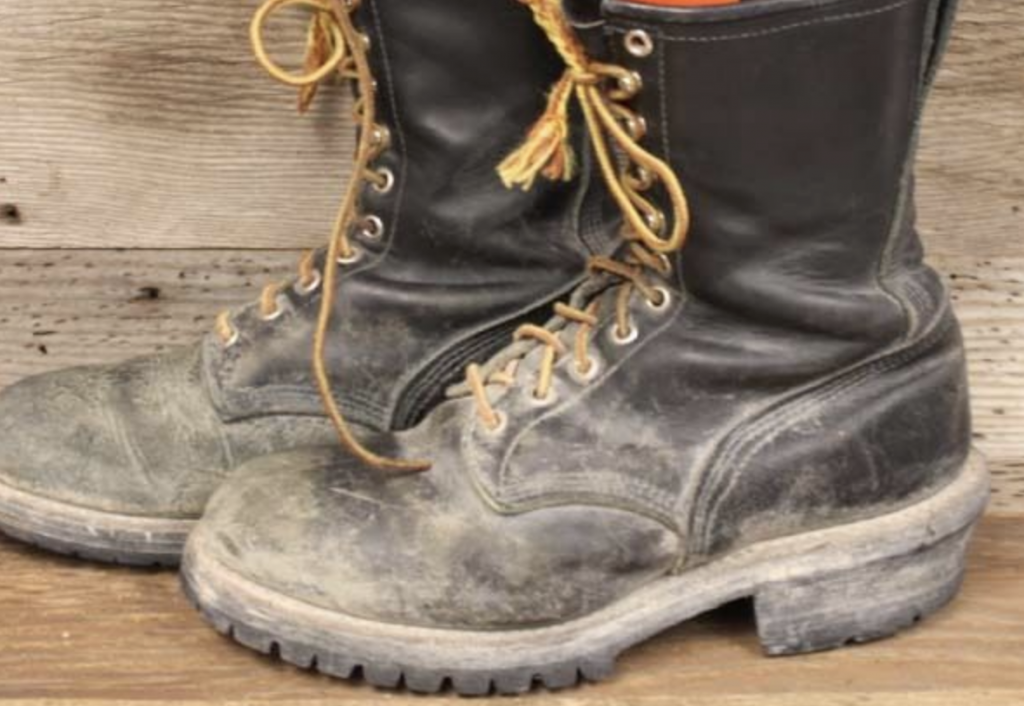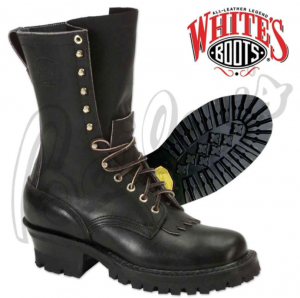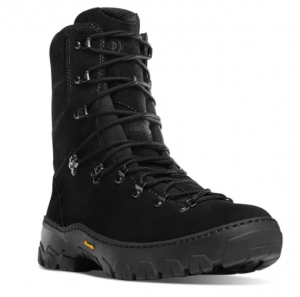
By Rob Shaul
We received some feedback from Wildland Firefighters concerning the MTI 3/600/3 Wildland Firefighter Endurance Assessment.
The issue wasn’t the assessment, but rather requiring athletes to run the first 3 mile event in their firefighting boots. Below is the back and forth between myself and the Wildland Firefighters with concerns.
This general issue is applicable to all athletes we work with. Should you assess in the gear you’ll wear during the real thing?
Want to weigh in? Email rob@mtntactical.com
(1) USER FEEDBACK: WILDLAND FIREFIGHTER ENDURANCE ASSESSMENT
I have read and used several of your programs, but I really have to question your judgment on this assessment test. Running in boots? You’re just asking that people get injured. I understand your logic in wanted them to be in uniform as that makes it easier to administer the test and adds the added heat stress element to the test, but I just can’t understand boots. The military had us quit running in boots (for the most part) before I joined in 2003 and I’ve seen many papers and sports medicine doctors talk about how bad it is. More importantly, most of these guys will be running in Whites or heavy mountaineering boots, not some high-speed tactical boot that is somewhat designed for running.
I really think you need to rethink this piece and then re-issue your assessment guidelines. Other than the boot issue, I see this as a great tool for establishing a baseline for our Type 2IA handcrews, IHCs, Jumpers, and helitack/Rappel crews. I regretfully don’t see a lot of our engine folks being able to complete this.
Something else to consider putting in there would be an upper body/arm strength assessment. Just because you can run and hike well loaded and unloaded, doesn’t mean you can swing a tool or run a saw all day long.
ROB’S RESPONSE
Thanks for your note and feedback. Must disagree with you about the boots, but of course, that would be up to the individual unit.
We’ve been working on a comprehensive Wildland fitness assessment similar to Operator Ugly which will include an upper body assessment and have a stamina element. The goal here was Mission-Direct Endurance.
My guess is the “crux” would be the step ups. This would break some folks who hadn’t done them before.
– Rob


(2) READER’S FEEDBACK: WILDLAND FIREFIGHTER ENDURANCE ASSESSMENT
Long-time fan since the Mountain Athlete and Military Athlete days. I saw someone post your assessment for wildland firefighters and have a few questions:
quick background: USMC infantry (2002-2010), contracting (2011-2015), wildland firefighting (2 seasons), tac med, and now city firefighter. None of that is meant as a look-at-me, just where I’m coming from.
My question/concern is why doing all of this in fire boots? I’m a bit confused in regards to this decision with your history of working with mil, first responders, and mountain athletes.
The assessment itself makes sense and I see no problems with it. I think the traditional arduous packtest is a joke and offers a false sense of security. I’m assuming you’re looking at your assessment similar to the military: cammies/boots and utes for various events; test as you perform.
My concern and confusion is from the runs with boots. From my observation and experience, many use boots such as Whites, which have a narrow heel and less stability than some of the more modern boots such as Scarpa Fuegos, etc. This correlates with boots used in the military (outdoor/field application) which have more stable sole profiles and support. Additionally, many mil schools have moved away from using boots with running specific tasks (the task is running, not a ruck or land navigation and figure-it-out-for-yourself). Its also a bit of a concern from a safety standpoint with sprints and a max effort 3 mile run. What is the benefit of boots vs shoes in these two assessments while the candidate has a 10 minute period before the ruck? This is also under the assumption of assessment being on track, road, or something similar.
Thank you for your time and being progressive. Hopefully my question and thoughts came across correctly.
ROB’S RESPONSE
My hope is the assessment will be as mission-direct as possible, including gear. I’ll play devil’s advocate with you here…..
Absolutely, completing this assessment in your full fire uniform, including boots, and carrying a hand tool the whole time would suck – especially on a hot day – similar to the hot weather that produces forest fires. It would be more comfortable and times would be faster to complete it in shorts, sneakers, and a t-shirt.
Military loading matches or exceeds wildland firefighter loading yet military guys don’t buy/use Whites-style boots. I’m not sure asking guys to run 3 miles wouldn’t be something that couldn’t happen in the field. Indeed, in the field, esp. with the downhills, wouldn’t it be harder in boots with narrow, high heels?
I’m no expert on wildland fire feet – but understand “Whites” style aren’t the only choice. Danner’s Wildland “Tactical” and the Haix Missoula boots look pretty similar to military boots I’ve seen and are reg compliant. Is it up to the firefighter? If so, this is an equipment decision on his/her part – along with uniform, pack, etc. Are “Whites” style boots chosen out of performance, or tradition? In general, we believe it’s better to find equipment deficiencies in training.
Military guys regularly run and ruck run, in boots. Especially at selections and schools. I understand the injury issues. But, typical line unit Army fitness programming is focused on bodyweight movements and unloaded running, yet guys in the field wear 45 pounds of gear minimum, and upwards of 100+ pounds on overnight patrols. This takes some serious strength which bodyweight – only work can’t produce. I wonder if the injuries aren’t somewhat linked to taking guys who only run unloaded in tennis shoes, throwing a heavy pack on them, and making them run or ruck fast.
I would hope wildland fire units deploying this assessment would let incoming firefighters know what was coming and urge them to train in boots.
….. But obviously, assessment uniform would be up to the unit – including boots or no boots. The change here, other than the pack out tests many units use for rookie training and early season training – is the loading and uniform.
Yes on the course – flat course. Ideal and easiest would be a 1.5 mile down/back on a flat dirt road.
– Rob
READER’S FOLLOW UP RESPONSE
You make several good points, and I have a counter point and it stems around the “wildland fire boots” portion. Whites and all the other “logger/smokejumper” style boots are worn out of both “tradition” and because they last, and up until recently were the only real option for front/hotline work. The “mountaineering” style boots have too many de-lamination issues from the heat these boots see to be widely used by most in our profession.
The La Sportiva Glaciers say right on the webpage “NOT designed for front line firefighting” and many of us have seen their boot quality go down over the last few years.
The Scarpa Fuego’s are a good boot, but they have a full shank so the flex isn’t their for running and I can’t find it, but they used to advertise their glue was rated for 350*; which is commonly seen while performing the job so one always had to be cautious knowing they could loose their boot soles.
The Hiax’s haven’t taken off, except for occasionally with structure guys that dabble into the wildland world. I did just see that they are now advertising their glue as good to 573* so that is a definite plus, but their is still a lot of people worried about all the previous de-lamination issues that it will take them a while to be accepted into our workplace. When you are out in the middle of no where for 2 weeks you can’t have your boots fall apart, depending on the circumstances you are at the very least either sitting back at camp not getting paid or at the worst, your crew doesn’t meet minimum standards and now everyone is either waiting on your replacement to show up or being sent home.
And finally, you mention the Danners. Danner has had a good name in the Military and blue collar industries, however in the wildland world their name is synonymous with shit. Their previous wildland boots just haven’t held up and have been known to fail relativity easily and without even seeing a lot of fire/hot line use. These new boots do look like they could be a game changer as they have taken a similar sole that has been proven to work well in the Scarpa, La Sportiva, and Hiax and eliminated the one weak spot, the glue. The stitch down construction could be a game changer in bringing a more athletic and as you say, solve some of the equipment deficiencies while in training. The Danners still are running a steel shank, though they don’t say how long it is, again as you know if it’s full length or really even 3/4 it will drastically effect how one runs and more than likely would put strains on people in ways that will cause injuries.
I think if you were to also look and talk to the guys going through Selection and various schools that they are choosing specific footwear for that. They are going with lighter and more “athletic” style boots. If you google “what boots to wear to selection” you will see that the super lightweight boots like the Nike’s and UnderArmor’s are routinely suggested. In fact my buddy who went through the Army SF’s Selection a year and a half ago said that all but one guy was wearing those. Everyone that made it through Selection wears them except for during the mountain phases he said.
I do whole heartedly agree with you that more than likely a lot of injuries come from working out and do exercises unloaded and then jumping right in and having to work fully loaded.
I believe your assessment will at least let more people see the fitness levels that are truly needed for this career field and will hopefully reduce the number of preventable injuries that we see at the beginning and through the middle of the season.
Thank you for the work you do.
ROB’S FOLLOW UP RESPONSE TO
A couple thoughts for you to consider …..
– It seems the White’s boot is a compromise choice because of durability, not nessc. performance. This is still a gear issue.
– My sense is it’s entirely possible for wildland guys would have to have to run/jog 3 miles to fight fire, avoid fire, etc. In the forest they’d do this in their boots. They wouldn’t take a pair of sneakers out of their pack and change footwear.
– Let’s test it. I’m assuming you own a pair of Whites. I’d appreciate it if you’d throw ’em on, grab a hand tool and run 3 miles a dirt road at a brisk pace…. and report back how it was. It won’t take longer than 30 minutes, and my guess is you’ll be surprised.
– Rob
(3) READER’S RESPONSE
Rob, thanks for the quick reply and patience for mine.
7. Delivery of Firefighters – Return to Safety – Single Escape Route
When looking at fatality fires and near misses, we see a strong correlation between the options available for firefighters and the human factors that this creates. In an emergency situation, people go to what they know, to what they’ve been trained in. We fight fire the way we’ve been trained, and for years the E in LCES has been one of our weakest points, simply because we only ever seem to have one. “Slip and Capture” in Law Enforcement (where an officer grabs for a taser but pulls his gun) is a great example of trying to do one thing but in a high stress and time-compressed situation something else happens. For example, in a fire alarm or drill, people consistently run out of a building by the same manner they entered, even if danger is present there. We flee to what we know, our fear of the unknown is simply that strong, and our instincts and brain create tunnel-vision.
All too often this results in the error of attempting to get back to the LZ, the ship, or the helispot. In other cases it is not the aerial delivery but the attempt to return to safety, to the known, the the safe place where the shift began. All too often, the escape route is back down the line to the trucks. When we only identify a single escape route, our planning lacks resilience and depth. Any problem with that single escape route forces you into a narrow decision-wedge. Any failure in that escape threatens lives. We need many options for escape routes, especially when we take a look at the numbers for safety zone size. (Butler- MTDC)
Examples – Aerial
- Tuolumne – firefighter ran uphill to the anchor,
rather than down and out - South Canyon – helitack crewmembers were on the
ridge and continued to run uphill - Mann Gulch – crew attempted to run up-hill and
back to their jump-spot - Cramer – Helitack waited at the LZ for a ride that
never came
Examples – Return to Safety
- 30 Mile – crews attempt to go back to their route of travel, find it blocked and slowly deploy
- Yarnell – crew attempts to return to the ranch – a “bomb-proof SZ”
- Dude – initially run down to escape, find route blocked, attempt to return to earlier work area
ROB’S RESPONSE
(4) READER’S RESPONSE
Hey Rob I just wanted to point out that most Hotshot crews do something like this on day one of work-
Assessment Day
- 1.5 mile run
- Max push ups in 1 minute
- Max sit ups in 1 minute
- Max strict pull ups.
Change from PT clothes into fire clothes and boots.
- 99 foot individual line dig in 50 minutes or less
- 3 mile “hike” in 50 minutes or less(50lbs pack)
- 1000ft elevation gain over mixed terrain
Crew hike until the day is over. (Hike over varied terrain while occasionally stopping to do calisthenics)
The reason I’m pointing this out is that the 3 mile hike is a 3 miles run if you have any intention of finishing. On my crew at least 3 guys finished sub 40 minutes. Many guys will wear a mountaineering type boot on this day and then Whites for the rest of the season. However I have seen guys put up impressive times in their Whites. So it can be done and often is done. I think if it were a reasonable option guys would love a tactical boot but there isn’t one on the market that can stand up to the demands of a tough season.
YOU MIGHT ALSO LIKE MTI’S URBAN FIRE FITNESS ASSESSMENT TRAINING PLAN
